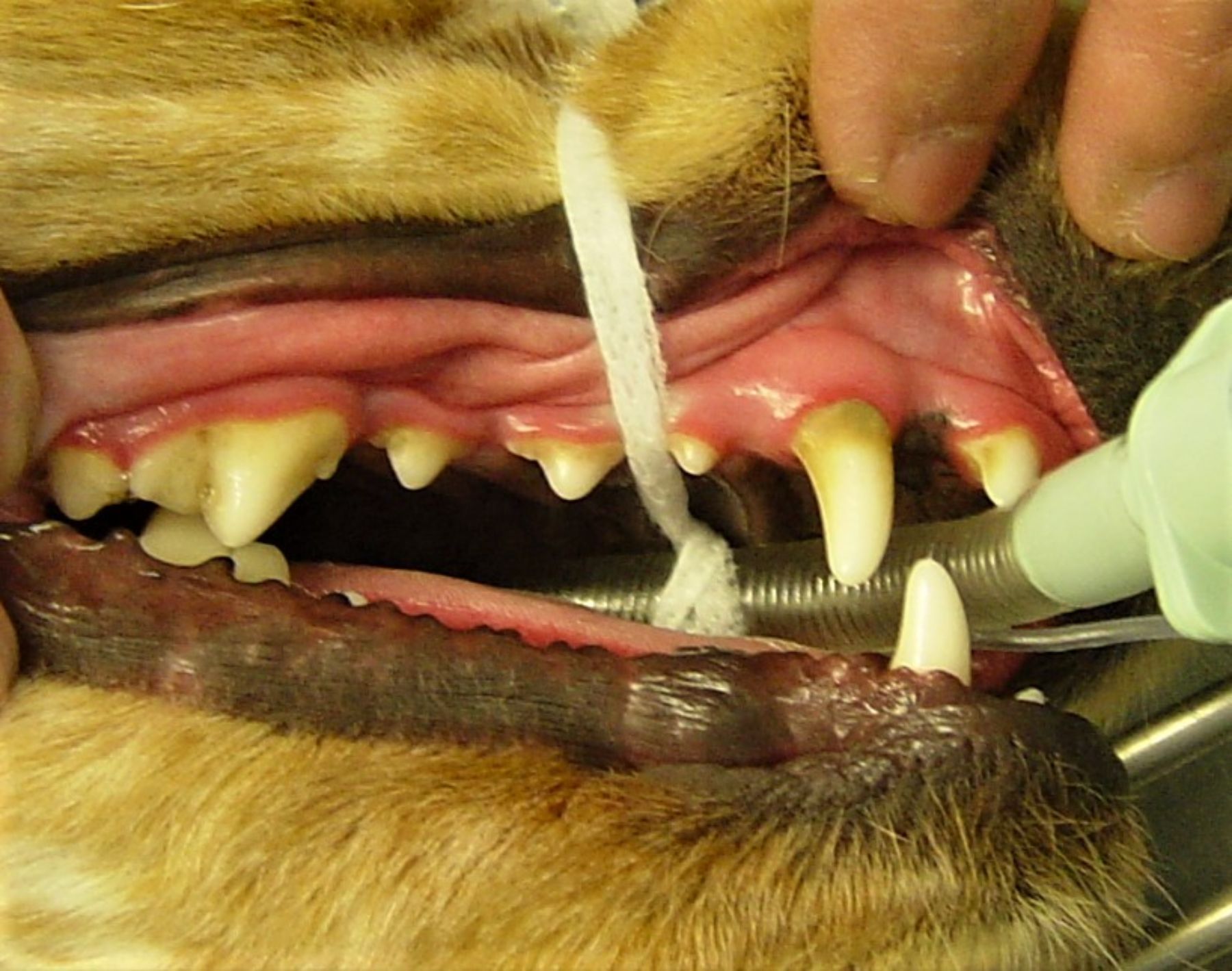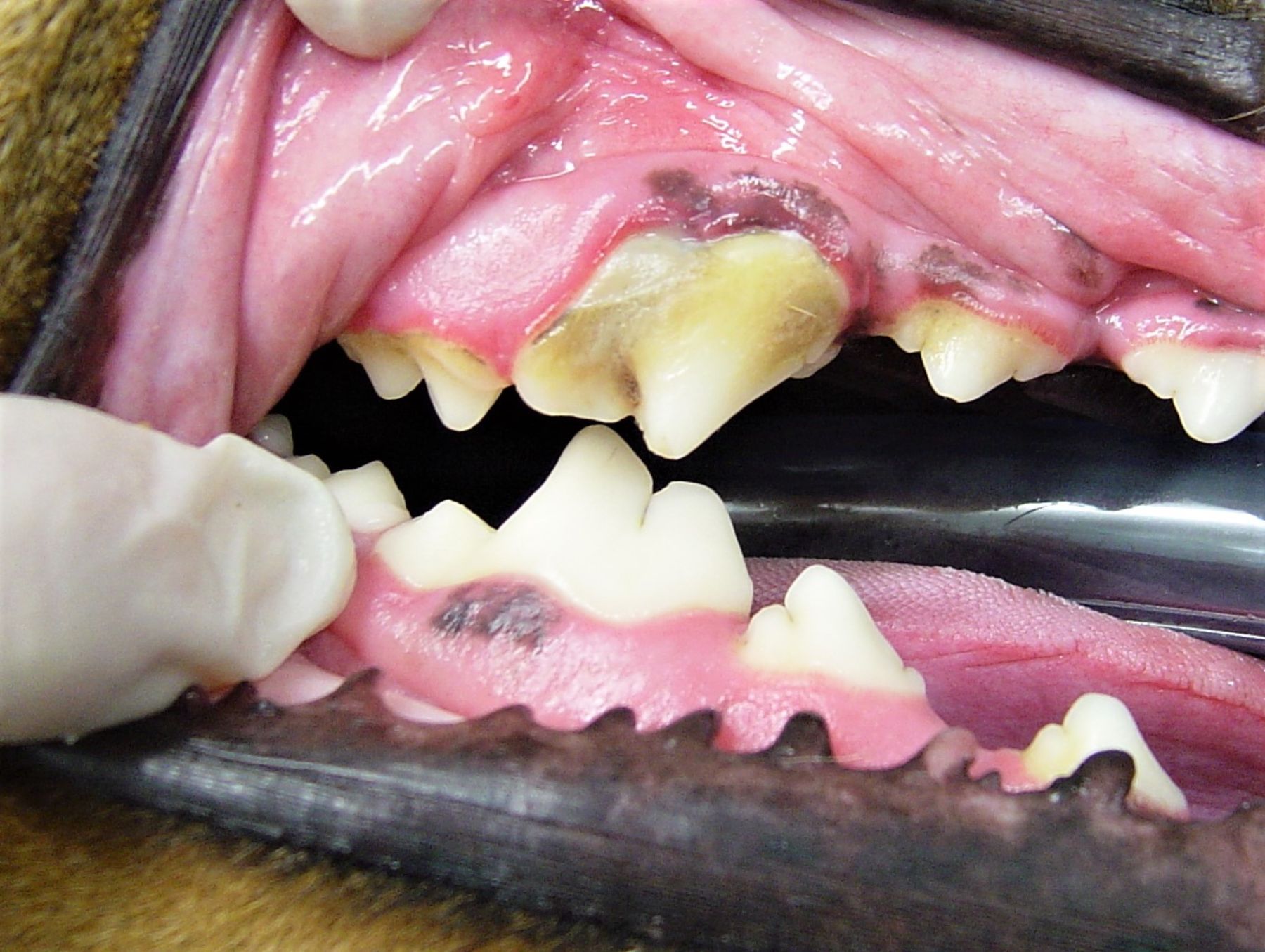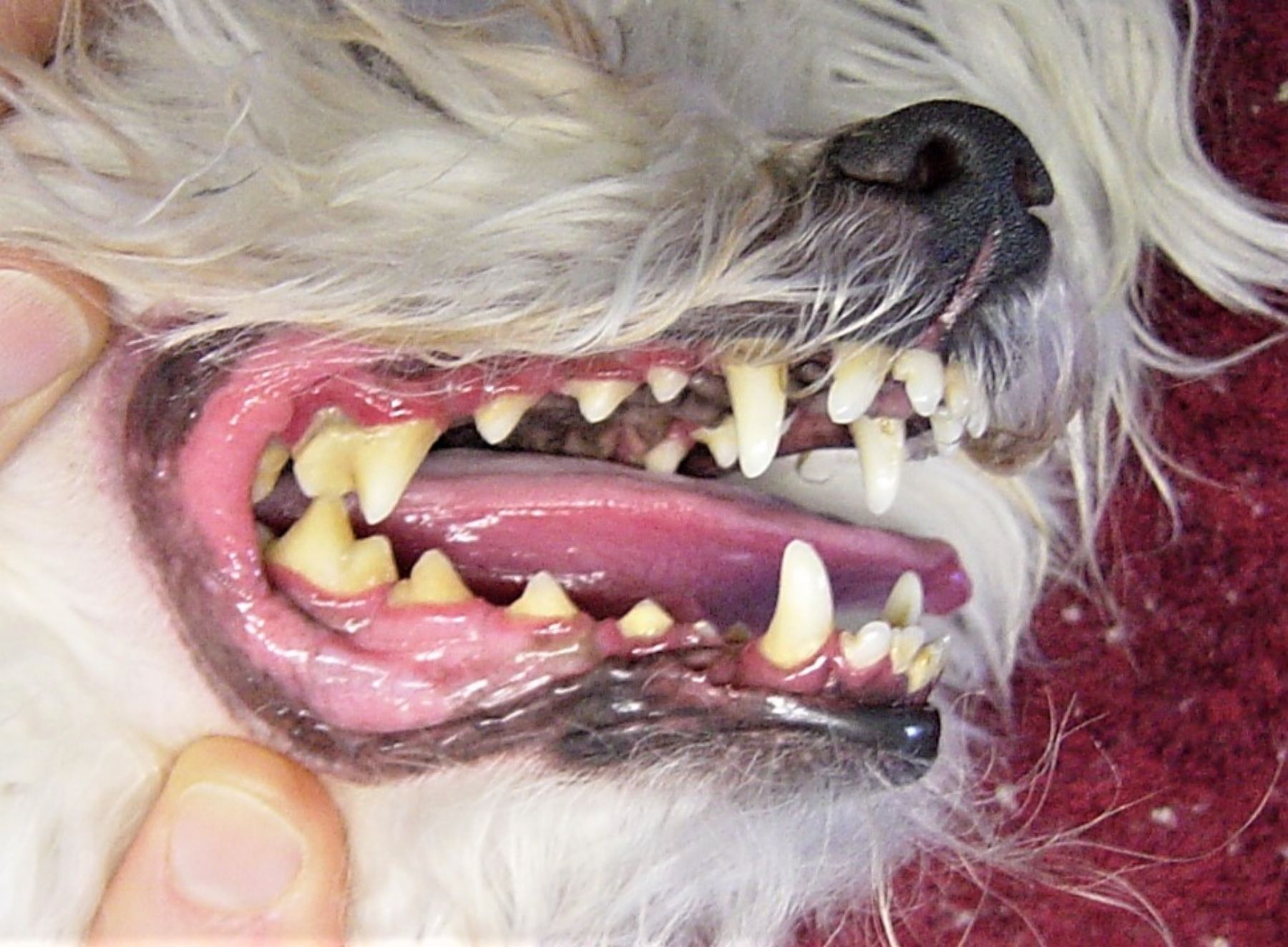Dogs’ and cats’ teeth are in many ways very similar to our teeth. The greatest differences lie in the shape of their teeth and mouths, which make dogs and cats very well adapted to hunting and eating a mainly meat-based diet. And like us, we need to look after our pets’ teeth because the health of their teeth and gum’s has a significant impact on their overall quality of life. Without a good dental care routine pets’ mouths quickly develop a foul smell and go on to develop Periodontal Disease. Unchecked, periodontal disease causes our pets severe and constant pain from inflamed gums and tooth disease. And unless we recognise that this is happening to them, they suffer in silence and struggle to maintain themselves through the discomfort.
Oral Preventive Health Care and Dentistry are rapidly developing areas of veterinary science. We now see more people are aware of the importance of dental care in relation to the overall health and life expectancy of their our animals.
So let’s go back to the beginning and understand what periodontal disease and why we are constantly trying to prevent, or at least slow, it’s progression.
What is Periodontal Disease?
Periodontal disease all begins when plaque, which is a nasty ‘sludge’ containing old saliva, bacteria, decomposing food and cell debris, accumulates on and around the teeth. Plaque is generally invisible but causes the gums to react with swelling and redness which we know as gingivitis. Given time, minerals in the plaque chemically transform into ‘calculus’ which is hard like concrete and bonds to the teeth.
This is Stage I Periodontal disease: What do we see at this stage?
When we lift our dog’s lips and look at the teeth we notice that the pearly, ivory colour of the crowns of the teeth take on a slightly yellow colour and the surface of the tooth is slightly slimy. The gum around the base of the crown is more red and is starting to become swollen. Their breath is not pleasant to smell.
What do we (and our own dentists!) recommend at this stage? A professional teeth cleaning (and in the case of our dogs, under anaesthesia)
Given time, minerals in the plaque chemically transform into ‘calculus’ which is hard like concrete and bonds to the teeth. Because calculus has a rough surface it is an ideal place for further plaque to form and that, of course, transforms into more calculus so that the layer of calculus becomes bigger and impacts on the gums and ultimately the roots and bone around the teeth. The festering contents of the plaque and calculus harbour bacteria which are a constant source of infection for the gums, tooth ligaments and supporting bone.
This is Stage II Periodontal disease: What do we see at this stage?
Gingivitis is now obvious as the gums are red and swollen from inflammation, especially where calculus (sometimes referred to as ‘tartar’) has formed. Calculus forms first at the base of the teeth and in any crevices. Fido’s breath is now noticeably unpleasant and, if they could talk, they would say they now feel pain when eating. X-rays at this time show up to 25% of the bone that normally supports the tooth has been lost to the infection and inflammation.
What do we recommend at this stage? A professional teeth cleaning under anaesthesia. In addition the dog needs a though scaling of its teeth to remove the bonded-on calculus both above and, especially below the gum-line.
(STOP, PLEASE STOP! I’VE READ ENOUGH, HELP ME FIND HOW TO STOP THIS TERRIBLE DISEASE! How to Care for My Dog’s Teeth at Home.)
The teeth are now in real trouble and plaque and calculus continue to build up causing ever worsening swelling and gingivitis. The gum-line recedes from the base of the crown creating ’periodontal pockets’ and exposing the neck of the tooth (the area between the crown and roots). The rate of destruction of the supporting bone and dental ligaments now accelerates as the protective gum us pushed back. Up to 50% of the bone supporting the tooth is destroyed.
This is Stage III Periodontal disease: What do we see at this stage?
No there is no doubt about the pain and even touching the gums may cause them to bleed. The calculus takes over the tooth and often only part of the crown remains visible. Your dog’s bad breath makes them unwelcome bedfellows and they develop an unpleasant odour. Your dog may resent you handling their mouth and may not wish for you to give them tablets, like worming treatment. Do they stop eating? Usually not because, despite the pain of eating, their desire to live takes over and they eat uncomfortably through the pain.
What do we recommend at this stage? A professional thorough teeth cleaning and scaling under anaesthesia. It is almost inevitable that some teeth will have to be extracted and the remaining bone and gum infection treated with antibiotics, anti-inflammatories and pain medications. The risk of more rapid recurrence of periodontal disease is increased significantly.
Without treatment at this time the established periodontal disease continues, often at an accelerated rate as the infective challenge increases and the body’s defences are exhausted. The gums are severely inflamed and disfigured. We see more than 75% of the tissues supporting the teeth are destroyed and the tooth roots are often expose. There is the risk of bone abscessation and even jaw fractures because the bone is weakened. Some teeth may ‘fall out’ leaving behind continuing bone and gum infection. Furthermore, the inflammatory response in the gums can spread to other organs such as the heart, kidneys, liver and brain where it can cause life-shortening disease.
This is Stage IV Periodontal Disease. What do we recommend at this stage?
Our dog is now in severe and constant pain and may be less playful or even unwilling to interact as normal. The bad breath is unbearable and pus and debris may be seen around the diseased teeth. Some teeth may ‘fall out’ leaving behind continuing bone and gum infection. Furthermore, the inflammatory response in the gums can spread to other organs such as the heart, kidneys, liver and brain where it can cause life-shortening disease.
What do we recommend at this stage? We are now in the position of needing to urgently meet our obligations to uphold our dog’s welfare because they are in constant pain. A professional thorough teeth cleaning and scaling under anaesthesia. It is almost inevitable that some teeth will have to be extracted and the remaining bone and gum infection treated with antibiotics, anti-inflammatories and pain medications. The risk of more rapid recurrence of periodontal disease is increased significantly.
Signs of Periodontal Disease are:
Swollen red gums.
Bad Breath
Difficulty eating – often a pet stops eating hard food and will only want soft food
Excessive drooling
Loose teeth
